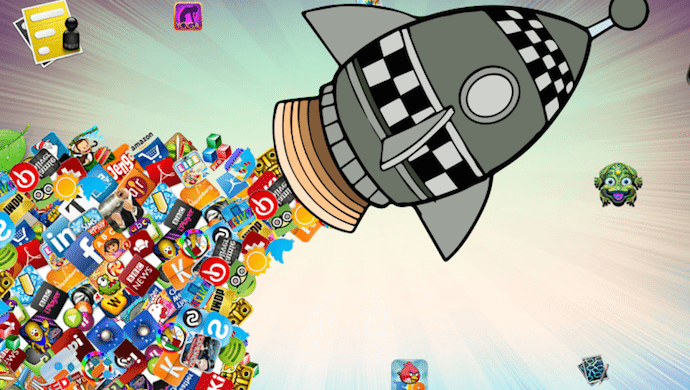4 common mistakes startups make when launching mobile apps

The ‘if you build it, they will come’ concept does not necessarily apply to mobile apps. Here are a few things you should avoid
Have you thought of building the coolest app ever that everyone will download? Maybe it will even go viral!
Do you want to develop it yourself, but you don’t know how exactly an app is developed? You might think it’s easy, a lot of people think so, but actually there are a lot of mistakes you can make in this process.
Here’s a list of the most common mistakes startups make when launching apps. Try to steer away from these pitfalls, so that you start out with a great app for your startup and your users.
1. Trying to start out on all platforms at once
This is a common mistake we’ve seen with thousands of apps. They try to reach as many users as they can, and don’t think about the downsides of doing so.
Take a look at Instagram for example (a very popular app): they waited to have 30,000,000 users on Apple’s operating system, iOS, before even launching on Android. Why do you think they did that? We’ll tell you why. Because, for starters, it is way cheaper to create for a single platform.
Also Read: Think you use your smartphone too much? It is probably more than you even realise
You can also concentrate on fixing all the bugs and issues users find in the app, as soon as possible. Building for two or multiple operating systems, will double or triple your working hours and budget – and what startup wants that?
So, I advise you to start out on the platform most of your targeted audience is found on, then try to expand to others.
2. Not using Analytics of any sort
This one is a big no-no. If you’re a business owner, or have been working in a company, you know analytics are very important in every aspect of a business.
When you’re developing a website, you are basically obliged to use Google Analytics (or any another viable analytics application) to help you out in managing said website.
You might be a little surprised to find out (but in retrospect, you shouldn’t be) that there are analytics programs available for apps, too. You can find out different pieces of important information, which can help you optimise your app for success.
Here are a few metrics you might want to follow from the very beginning:
App Crashes,
Retention Rate,
Engagement,
DAU (Daily Active Users),
Average Time Spent within the App.
If you’re not sure what program to use, Flurry is a great program for apps, at least for starters.
Also Read: 4 key mobile metrics for next-level marketing
3. Don’t be a ‘hoarder’ of features
We know, we know. You want your app to rock people’s worlds, to have as many features as they could fathom, but, sadly, that’s not how mobile works.
Desktop is the way to go, if you want toshove as many features as you can into a web application. However, mobile is all about ‘less is more’.
Users like a clean, easy to access user interface, which will let them do exactly what they need with as few taps as possible. People don’t usually have time when looking at their phones, so you need to focus on the main features you want your app to show off, so that they don’t get bored or disappointed with your app.
Also, we know that releasing an app is an exciting event, but try to be 100 per cent sure your app doesn’t have any major bugs before releasing it to the world. First impressions are everything in the mobile universe, so you better make a great one.
4. Monetisation is important — research it
A lot of startups don’t think too much about monetisation. They see free apps in the top most downloaded apps and they think ‘My app must be free’.
This is not a given.
After all, sadly, ads will not cover your costs during app development. A huge multinational won’t magically buy your app for an impressive amount of money (or maybe you’re lucky, who knows?). But, you get the point: you have to think about monetisation.
Also Read: Why the funnel system isn’t cutting it for your mobile app
The best (and fastest) way to find out if users will be willing to pay for your app, is to look at similar apps in the Google Play Store or Apple’s App Store. Download the apps, play around with it, and find out if they have in-app purchases. See how they are ranked, and what their reviews are. Based on these observations, you can have a better idea of whether your app can be monetised through methods like outright purchase or in-app purchases.
The takeaway
I am sure there are other mistakes developers are making out there, but these are the most common issues that plague app developers and app-preneurs alike. Don’t forget to think about monetisation, try to build for a single platform at first, and use analytics so you can create a better app for your user.
—-
The views expressed here are of the author’s, and e27 may not necessarily subscribe to them. e27 invites members from Asia’s tech industry and startup community to share their honest opinions and expert knowledge with our readers. If you are interested in sharing your point of view, submit your post here.
The post 4 common mistakes startups make when launching mobile apps appeared first on e27.



